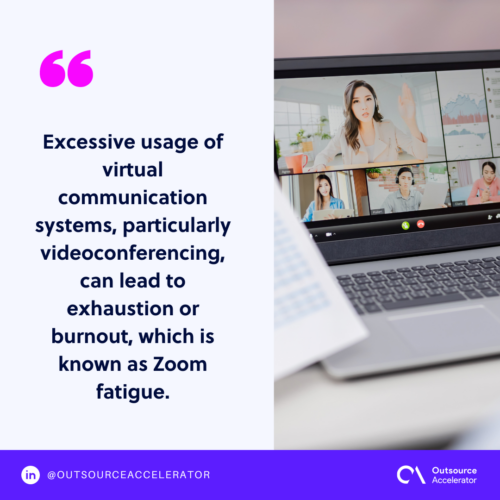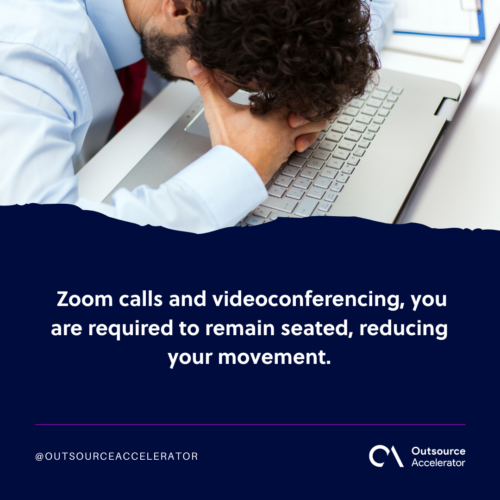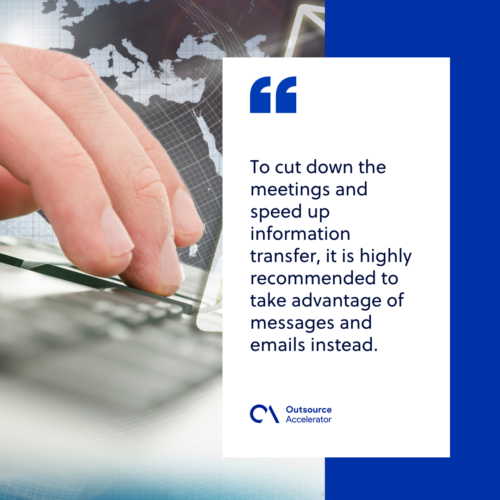What you need to know about Zoom fatigue

Due to the unforeseen pandemic, the use of technology has risen tenfold. Many have been forced to cope as social interactions became restricted due to quarantines and lockdowns.
Traditional norms were adapted into virtual ones. Bills payment, shopping, education, meetings, and seminars are suddenly made in the comfort of our home.
Further, with business professionals no longer in the office, Zoom has emerged as the closest to team building, brainstorming, and meetings they can have. While it has been a helpful tool for digital transformation, Zoom has also been a source of stress for some.
Have you ever logged out of your Zoom meeting and found yourself exhausted? You might be suffering from Zoom fatigue.
What is Zoom fatigue?
Excessive usage of virtual communication systems, particularly videoconferencing, can lead to exhaustion or burnout, which is known as Zoom fatigue.
Frequent meetings and brainstormings have their purposes. They are conducted to ensure that the team members are doing their tasks and pitching out ideas for potential business growth.
However, overuse can be dangerous, and some may not be aware that they’re experiencing Zoom fatigue. Its indicators are similar to the general feeling of burnout: you feel drained, tense, resentful, and even depressed.
It may also manifest through physical pain such as headaches and stomach pain.

What causes Zoom fatigue?
Zoom fatigues may come from communication overload that doesn’t happen in normal conversations. According to a study done by Stanford researchers, here are the leading causes of Zoom fatigue:
Getting too much close-up eye contact
On Zoom calls, it may feel like all eyes are on you. As you stare at your own screen, it looks as though the participants’ faces are too close, and eye contact may become uncomfortable.
People’s anxiety and self-consciousness grow when they look at each other even when they’re just listening in the Zoom meeting.
Seeing yourself during video chats
Some people may like the idea of seeing themselves during a video call, but some may be uncomfortable. They feel anxious whether they look presentable or people are judging their video surroundings.
Exerting effort for non-verbal cues
People get anxious that people are watching them on a video conference. Every single gesture could mean anything.
Zoom conferences compel people to be extra conscious of their facial expressions and gestures, while those on the other end work harder to interpret these non-verbal cues. This extra effort may drain people out faster.
Lacking mobility
With in-person conversations, the communicating parties can walk around and feel more comfortable while talking to each other. However, with Zoom calls and videoconferencing, you are required to remain seated, reducing your movement.

How to combat Zoom fatigue
Are you showing signs of Zoom fatigue? Here’s how to deal with Zoom fatigue:
Hide your self view
Each work environment has a unique set of rules in virtual meetings. You are free to switch on your camera if your organization doesn’t demand it.
However, if they require you to see your face on their screen, you can hide your self view instead. This cannot relieve the fatigue quickly, but it can lessen at some point.
Adjust settings
You can adjust all the settings on your end to minimize your screen view. Doing so can also reduce the faces of the people you’re talking to. This way, you can increase your sense of personal space.
Have an audio break and stretch
Taking an audio break is not just about turning off your camera and getting back to work. Sometimes, you need to turn your body away from your screen. Do some stretching to ease the strain from sitting in front of your screen for too long.
Schedule meetings mindfully
When scheduling meetings, make sure to pick a time when you’re in the best condition to speak with people virtually. Avoid consecutive meetings and make sure you have enough breaks between appointments.
It may also be good to arrange fun meetings on Zoom. This can help weaken the negative feeling around the platform.
Suggest an audio call
In some cases, you may suggest an audio call instead of a video conference. If there’s no presentation involved or the internet connection is weak, an audio call may be the best option.
Use emails and direct messages
A question doesn’t have to pass through Zoom. To cut down the meetings and speed up information transfer, it is highly recommended to take advantage of messages and emails instead. That way, you reserve your video calls for meetings that require more work to get done together.

Avoid multitasking
It’s tempting to believe in the potential of doing more in less time, yet attempting to do the various tasks at once reduces performance. Close any tabs or applications that can distract you and stay present in meetings to avoid Zoom fatigue.
Keep in mind that it’s okay to wait and you’ll be able to concentrate better when you’re not simultaneously on a video chat.
Find ways to reduce stress
Everyone has their way of dealing with stress. Others choose to exercise regularly or practice mindful meditation. To overcome this challenge, take advantage of the little things you have more control over now that you’re working from home.
Zoom fatigue: Know the facts
Zoom meetings are likely to stay and be part of the new business norms, so it’s important to maintain work and life balance. You can avoid Zoom fatigue if you’re more aware of the reasons and symptoms. With better practices, you’ll be able to improve performance and increase your productivity.







 Independent
Independent




